Nuts and Bolts: Travel Tips for Visiting Cape Town
- Rand Blimes

- May 24, 2025
- 12 min read
Updated: Jun 2, 2025
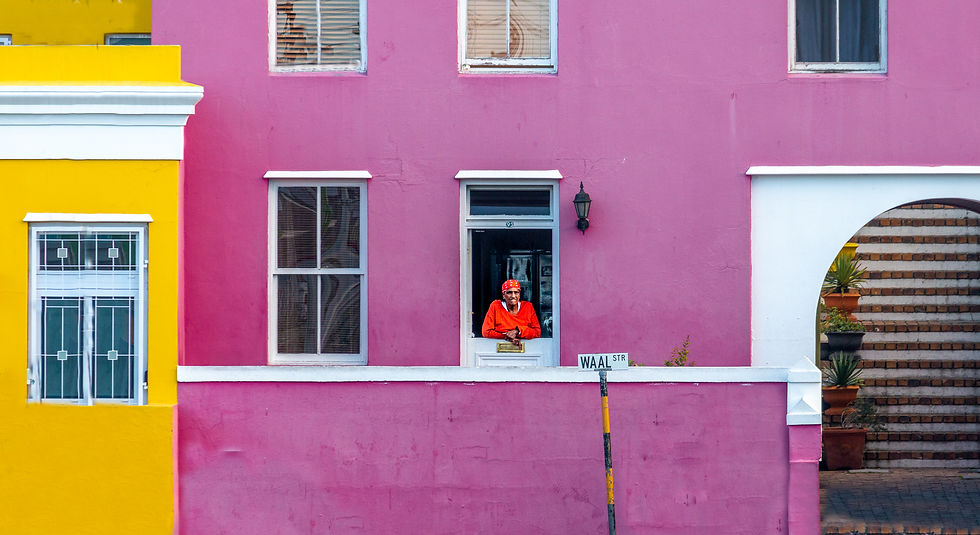
Nuts and Bolts posts give you the practical information you need, but without stripping away the humor, mishaps, and little victories that make real travel what it is. These aren’t just guides. They’re how we actually did it—mistakes, triumphs, and all.
This page has some travel tips for visiting Cape Town, to aid in planning your own trip. I travel mainly with my wife, and we love to simply wander and eat when we explore a new place. We were in Cape Town for four days in June, 2017. If your trip to Cape Town is significantly longer/shorter/with a different focus, you may have a very different experience.
Cape Town: It’s Fine (and That’s OK)
I think we may be cursed.
The places everyone raves about—the ones that show up on every “best cities in the world” list, the ones travelers gush over in forums, guidebooks, and dinner party conversations—we often don’t love them. We don’t hate them either. We just . . . think they are fine.
Sri Lanka? Fine.
Paris? Fine.
So we probably should have seen it coming when we arrived in Cape Town, a city many travelers call the most beautiful in the world. It’s beloved. Adored. Canonized. And I am genuinely happy for everyone who feels that way.
But it wouldn’t crack my top ten list. Any of my top ten lists, really. It wouldn’t make a bottom ten either. Cape Town was—here it comes again—fine.
Yes, it was pretty. But not Prague-pretty, or Kyoto-pretty, or Sydney-pretty. We had some good meals, too. But not Bangkok or New York or Madrid good.
Let me be clear: this is not a takedown. I liked Cape Town. I’m glad I went. But I also think we need to make more space in travel writing for the middle ground—the places that are perfectly okay. There’s pressure in this game to fall in love with every place or to launch a dramatic takedown. Because extremes make for good content.
But most of the world doesn’t live at the extremes. Most of it is somewhere in the vast, complicated, subjective middle.
And that’s fine. Just like Cape Town.
So here are some tips for visiting Cape Town. And I honestly hope you love it.
Travel Tips for Visiting Cape Town: Weather
Cape Town’s weather is as dramatic as its mountain views—you can get all four seasons in a day, and none of them may be the one you packed for. The city has a Mediterranean climate, which means warm, dry summers (December to February) and cool, wet winters (June to August). In theory.
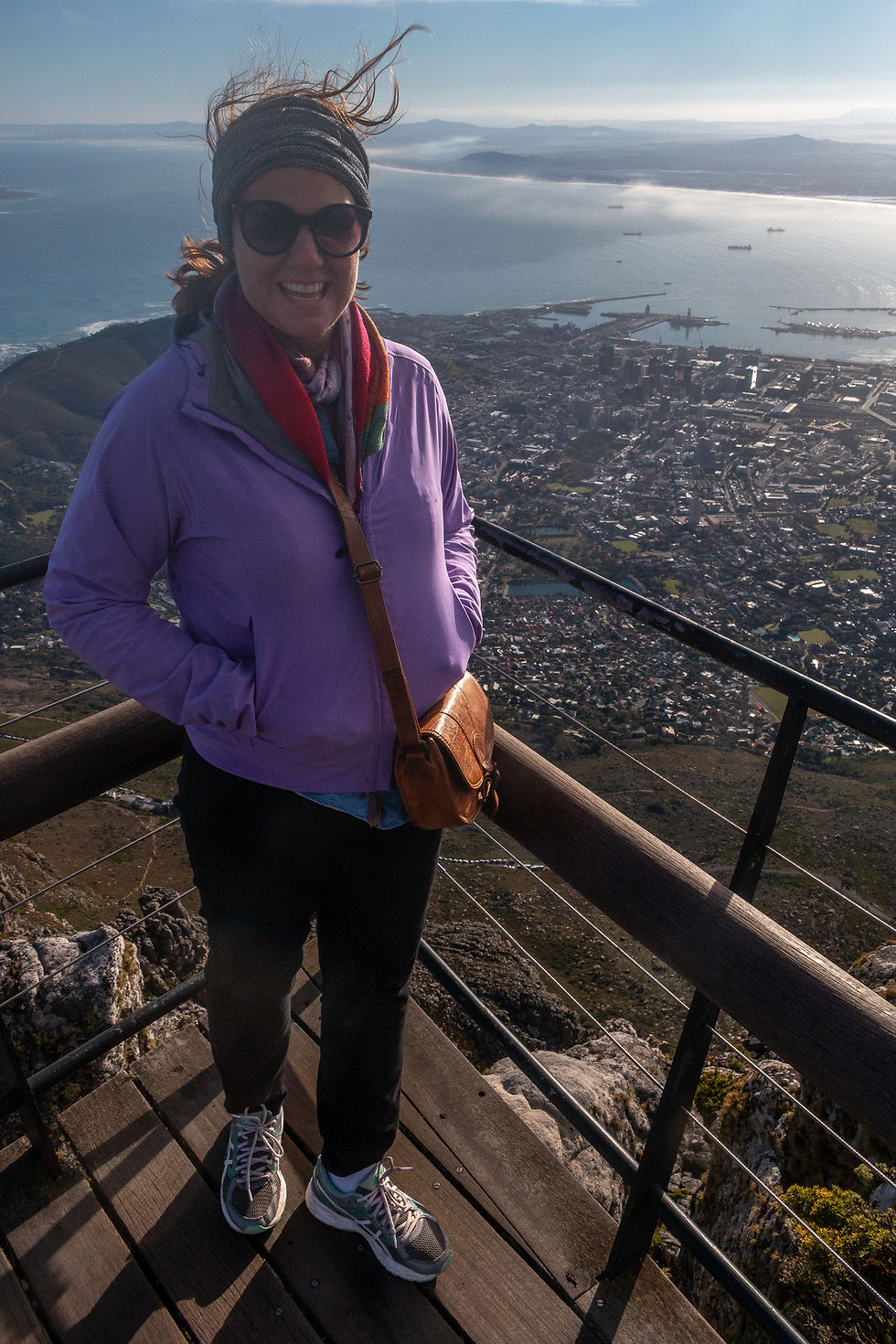
In practice? Summer can bring glorious, beach-worthy days—if the wind doesn’t try to rip your face off. Winter can offer surprisingly clear afternoons between rain squalls. Spring and autumn are probably your best bet for balance, though they come with their own grab bag of unpredictability.
If you're planning a visit, bring layers. Bring sunscreen. Bring a rain jacket. And be prepared to put them all on and take them all off within the same hour. Just like the city itself, the weather in Cape Town is... fine. Occasionally glorious. Occasionally annoying. Mostly somewhere in between.
Do note that if you come in winter like we did (June) and you visit the summit of Table Mountain (which you should do while in Cape Town) it can be downright cold. Not chilly. Not cool. Cold. Big time. Be warned.
Getting to Cape Town
Cape Town is perched on the southern edge of the African continent—beautiful, remote, and not particularly close to anything. That’s part of its mystique. It’s also why getting there usually involves a long flight and at least one layover.
If you're coming from outside of Africa, chances are you’ll fly into Cape Town International Airport (CPT) via a connection in Johannesburg, Doha, Dubai, or Istanbul, depending on your airline and continent of origin. The airport is modern, efficient, and not overwhelmingly large, which makes arrival surprisingly painless after a long-haul flight.
From the airport, it’s about 20–30 minutes by car into the city. There is no direct train into town, and public buses exist but aren’t built for travelers with luggage and low patience. Your best bet is to book a rideshare, grab a taxi, or arrange a transfer through your hotel or guesthouse.
Once you’ve arrived and settled in, the real travel begins. But step one—getting to Cape Town—can be a test of endurance. One that, thankfully, ends with penguins, mountains, and colorful streets. So not all bad.
Getting Around Cape Town
As a rule, we don’t usually keep a rental car once we reach a major city. Normally, we hand over the keys, settle into a walkable neighborhood, and rely on public transport or rideshares to get around. But in Cape Town, we broke our rule—and we’re glad we did.
The city is beautifully spread out, which makes for great scenery but not-so-great convenience. Many of Cape Town’s highlights—Table Mountain, Kirstenbosch Gardens, Bo-Kaap, the V&A Waterfront, and Camps Bay—are scattered in different corners of the city. If you want to hit them all without constant planning or negotiation, having your own wheels helps. A lot.
Driving is on the left side of the street, so be ready for that if you are from a right-side driving country. We never had any trouble finding parking while we were out. Don’t leave your rental parked street side overnight, and don’t leave anything that looks like it might be valuable in the car ever.
An added benefit of keeping the car was we could take day trips at our own pace, like our drive down the Cape Peninsula—hanging out with penguins was a highlight of our time in South Africa.
That said, there are other ways to get around:
Public transit exists, but it’s limited. The MyCiTi Bus is your best bet—safe, clean, and reliable on certain routes (like to the airport or along the Atlantic Seaboard). But it doesn’t cover everything.
Minibus taxis (the kind used by locals) are chaotic, informal, and best avoided unless you know the system—and even then, maybe still avoid them.
Metered taxis are available but often expensive, hard to find, and not always the most reliable.
Rideshare apps like Uber and Bolt are widely used and generally safe and affordable. They weren't functional when we were there in 2017, so we didn't use them. But they are considered quite safe and effective now. They’re a solid option if you’re car-free and just hopping between major sights.
If you're staying right in the city bowl and only plan to see a few central spots, you could make it work without a car. But if you want to explore widely, chase sunrises, or take detours on a whim, getting a rental might just be the best decision you can make.
Sleeping in Cape Town for the Budget Conscious Traveler
We stayed at the Happy Rhino Hotel, which, in keeping with the theme of this post, was... fine. The location was central, the price was reasonable, and there was convenient parking—a small miracle in any city. It wasn’t luxurious, but it worked. That’s the thing with Cape Town: the neighborhood you stay in often matters more than the hotel you stay in.
Here’s a quick rundown of the main neighborhoods to consider:
City Bowl / Central Cape Town – This is where we stayed. It’s walkable, close to restaurants, shops, and major sights like Company’s Garden and Bo-Kaap. You’re right in the middle of the action, which is great for convenience, though it can get a bit loud or gritty depending on the block. Good if you want to explore on foot and don’t mind some city noise.
Gardens / Tamboerskloof – Just uphill from the city center, this area has a more residential feel, with leafy streets, boutique guesthouses, and views of Table Mountain. It’s quieter but still central. A solid option if you want charm without being far from downtown.
Green Point / Sea Point – These are popular coastal neighborhoods that sit between the city center and Camps Bay. You’ll find good restaurants, waterfront promenades, and easy access to the V&A Waterfront. Bonus: it’s cooler in summer thanks to the ocean breeze.
Camps Bay – If you’re after beach views and sunset cocktails, this is your spot. It’s more upscale and resort-y, with beautiful beaches and a holiday vibe. You’ll pay a bit more, but you’ll get the classic Cape Town seaside experience.
Woodstock / Observatory – These formerly industrial areas are now semi-gentrified and artsy, full of galleries, markets, and creative energy. Some parts are fun and full of character, others feel transitional. Budget-friendly, but research specific places before booking.
No matter where you stay, having a car makes everything easier—especially if you're in town for more than a day or two. Just make sure your hotel or guesthouse offers secure parking, because not all do, and street parking in Cape Town can be a gamble.
Eating in Cape Town
Cape Town has a reputation as one of Africa’s top food cities (for me, that would be Marrakesh). People rave about it—celebrity chefs, stylish cafés, weekend markets, and a steady stream of Instagrammable plates coming out of open kitchens. But if I’m being honest? We didn’t have any meals that knocked our socks off. Nothing was bad. It just wasn’t transcendent. Which, as you might expect by now, makes the whole food scene . . . fine.
That said, there’s definitely good food to be found, especially if you go in with realistic expectations and a bit of curiosity. One place to start is with local dishes. South Africa’s food heritage is rich and layered, with influences from Africa, Asia, and Europe. Look for bobotie, a spiced minced meat dish topped with egg and baked to a golden crust; or bunny chow, which is as fun to eat as it is to say—basically curry served in a hollowed-out loaf of white bread. Biltong—South Africa’s take on cured meat—is another staple, and makes a great snack on road trips.
For variety and atmosphere, Cape Town’s food markets are a good bet. The Oranjezicht City Farm Market near the V&A Waterfront, and the Mojo Market in Sea Point, both offer a little of everything: Cape Malay dishes, gourmet burgers, sushi, vegan cupcakes. The Old Biscuit Mill is one of Cape Town’s most charming venues to browse and graze. The market settings are fun and lively, and the odds of finding something good are better than average.
We also found that the casual food scene outshone the fine dining. Braai (South African barbecue) spots, local fish-and-chips shops, and easygoing cafés were often the most satisfying for us.
So no, this isn’t a city we’ll remember for culinary highs. But if you embrace what it does well and don’t expect Bangkok, Marrakesh, or Madrid, you’ll eat just fine. And maybe—if you're lucky—you’ll stumble on that one perfect meal that changes everything. If not? Well, that’s fine too.
What To Do in Cape Town
Cape Town is certainly not lacking in things to do. The range of activities is impressive: natural wonders, historical landmarks, vibrant neighborhoods, beaches, wildlife, and urban experiences all within easy reach. Here’s a solid lineup of what to see and do in and around the city:
A fantastic example of an urban waterfront done right. It’s touristy, yes—but with good reason. There are plenty of restaurants, shops, galleries, and places to just sit and watch boats come and go. It’s a great place for a first stroll in Cape Town, and an easy win if you’re traveling with kids or a mixed group.
A must-visit—if you can. This is where Nelson Mandela was imprisoned for 18 of his 27 years behind bars, and it’s one of South Africa’s most significant historical sites. Unfortunately, the ferry to the island doesn’t run in rough seas, which means you may want to book early and be flexible. We tried to go every day we were in Cape Town, and every day it was canceled.
Beaches
We didn’t spend much time at the beach—it was cold and windy in June—but if you’re in Cape Town during warmer weather, the beaches are a big draw. Try Clifton Beach for soft sand and some wind protection, Camps Bay for sunset and people-watching, or Muizenberg if you want those iconic colorful beach huts (and good beginner surf).
Bo-Kaap
One of the most photogenic neighborhoods in the city, with rows of brightly painted houses and cobblestone streets. It’s fun to wander and grab a few colorful shots, but don’t expect it to be easy to photograph well—cityscapes with straight streets are trickier than they look. Also, Bo-Kaap is a real neighborhood with families, schools, and community life. Be respectful, keep your voice down, and watch where you point your camera.
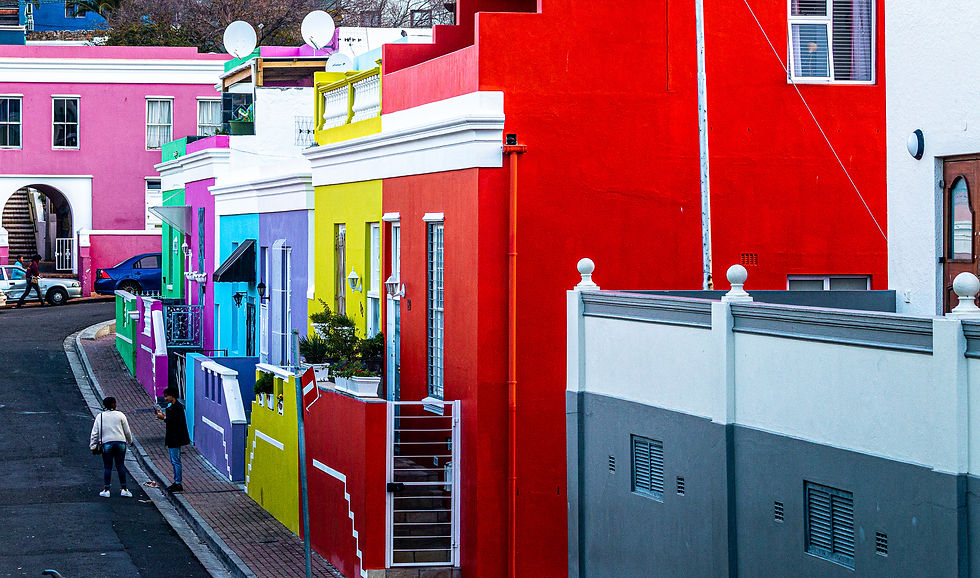
Cable Car to Table Mountain
Touristy, yes, but absolutely worth it. The view from the summit is better than fine(!!!)—rugged cliffs, ocean, city, and sky all wrapped into one panoramic sweep. It can be extremely cold at the top, even in warmer months, so dress like you're heading into the wind tunnel at the end of the world. If visibility is good, go.
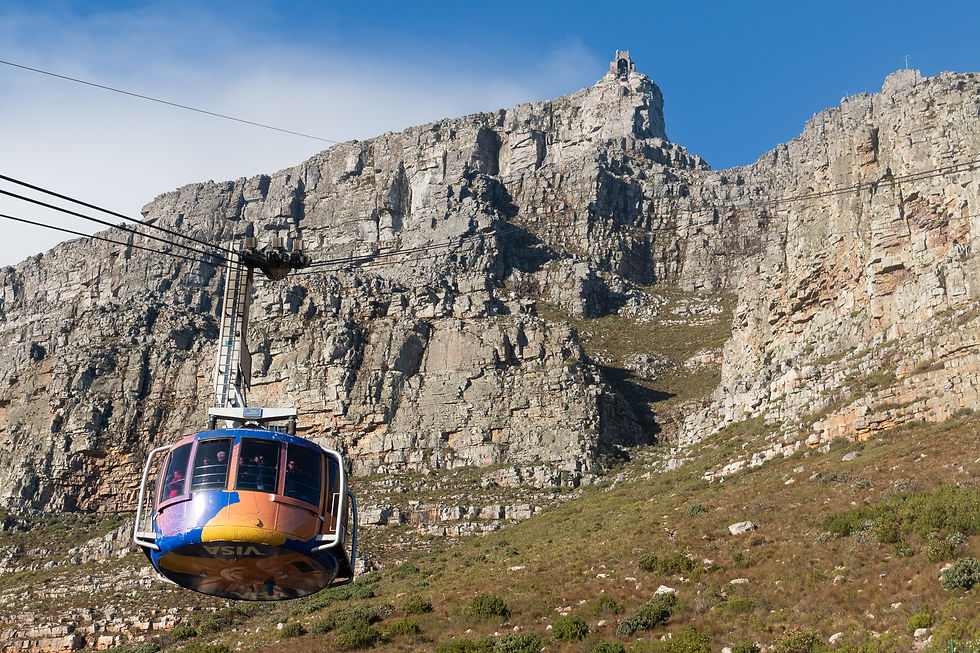
You can buy your ticket for the cable car online and skip waiting in line.
Street Art in Woodstock
The industrial neighborhood of Woodstock has become a creative hub filled with bold, political, and often beautiful street art. Join a walking tour for some context, or just wander with your camera and a coffee. It’s a great way to see a different side of Cape Town.
Set against the eastern slopes of Table Mountain, this is one of the world’s great botanical gardens. Whether or not you’re into plants, it’s a peaceful, beautifully landscaped place to wander, with shaded paths, open lawns, and views that rival any lookout point in the city.
Cape Peninsula Day Trip
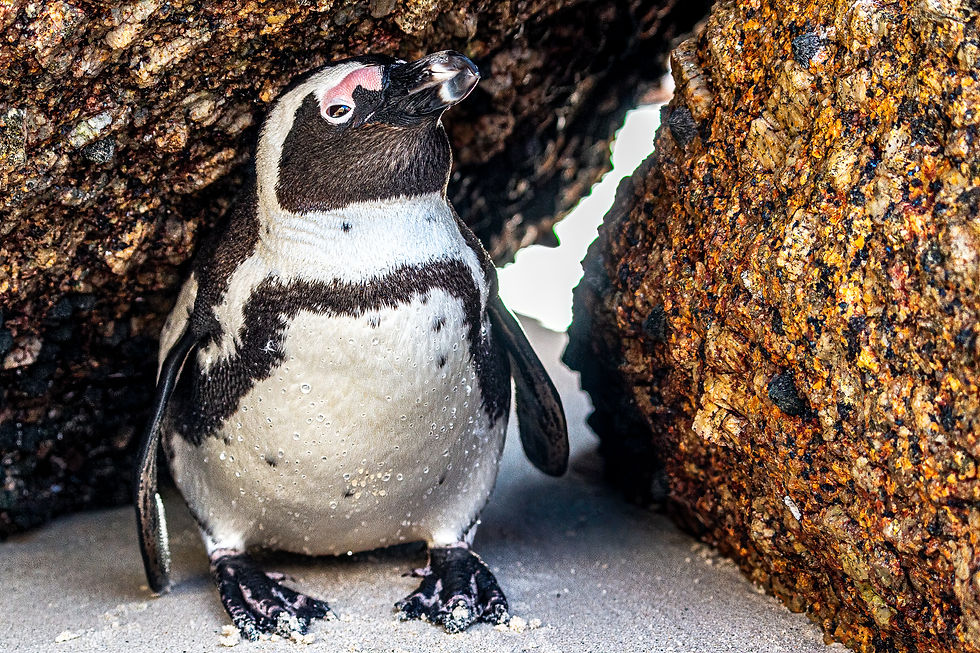
We covered this in detail [elsewhere], but it’s worth repeating: if you have a car, a day trip down the Cape Peninsula is a must. Penguins at Boulders Beach, the cliffs of Cape Point, Chapman’s Peak Drive, and scenic pullouts all the way down and back. It’s a highlight of any trip to Cape Town—and a good escape from the city itself.
Game Reserves Near Cape Town
If you’re not heading further north for a full safari—or if you just want more wildlife—you can visit a private game reserve near the city. Gondwana and Buffelsfontein are both reachable by car and offer guided game drives where you can spot lions, giraffes, zebras, and more. They’re not quite Kruger, but they’re a solid substitute if time or logistics don’t allow for a bigger safari.
Safety
Let’s talk about the elephant in the room. Yes, Cape Town has a reputation for crime, and yes, it’s something travelers should take seriously. But it’s also a city where millions of people live, work, and explore every day without incident—including tourists.
The key is to stay situationally aware and follow basic safety precautions. Stick to well-populated areas, especially after dark. Don’t flash valuables. Keep your phone tucked away unless you’re actively using it. When driving, keep your doors locked and don’t leave anything visible in the car, even for a quick stop.
Certain neighborhoods are best avoided unless you're with a local or on a guided tour. If in doubt, ask your hotel or host for up-to-date advice.
That said, we never felt unsafe during our time in Cape Town. We were cautious, but not paranoid. Like many cities around the world, Cape Town has its challenges—but with a little street smarts and common sense, you can explore comfortably and confidently.

Wrapping It Up: Cape Town Was Fine (and That’s Just Fine)
Cape Town didn’t sweep us off our feet. It didn’t blow our minds, steal our hearts, or shake up our worldview. But it also didn’t disappoint us, frustrate us, or make us wish we’d gone somewhere else. It was, in almost every way, fine.
And maybe that’s the point. Not every place has to be the best. Not every destination needs to become a lifelong obsession. Sometimes, a place is simply a stop on the journey—a beautiful, imperfect, interesting chapter in the book of travel. That doesn’t make it a failure. It makes it real.
Travel writing often pushes us to take sides. Love it or hate it. Rave or rant. But most of the world exists in the in-between. And it’s okay to say that. It’s okay to visit a place that everyone else adores and walk away thinking, “Yeah, that was nice.” Not life-changing. Not terrible. Just... nice.
Cape Town was that kind of place for us. A city of dramatic mountains, bright houses, cold wind, missed ferries, and penguins. A city we’re glad we saw. A city we probably won’t rush back to. A city that—like so much of life—was somewhere in the middle.
And that’s more than fine. Because travel is life, and life is not always lived in the extreme.
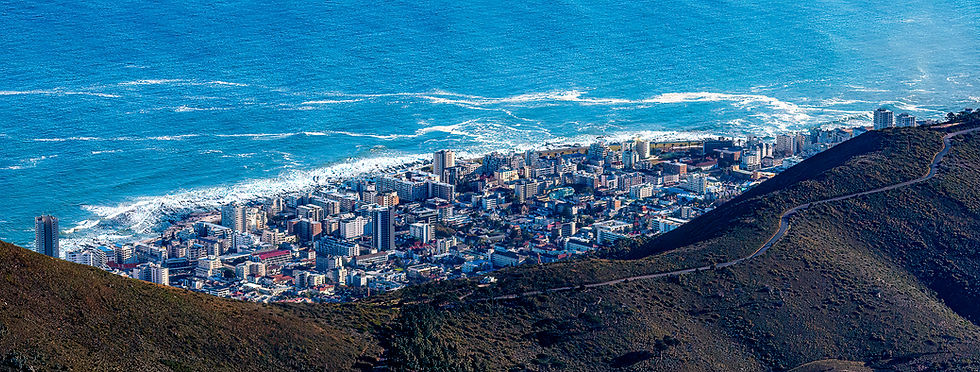



Comments